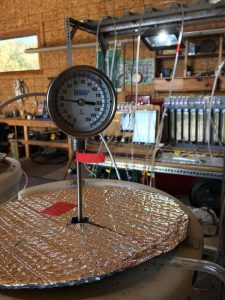CARBON DIOXIDE TEST - CO2 LAB
CARBON DIOXIDE TESTING
Woods End’s CO2 lab is a dynamic research and development environment for new analytical trends and innovative product development. Carbon dioxide testing provides valuable data to analyze and understand the transformation of carbon dioxide in soil.
By enabling the examination of soils and related organic-based materials for multiple stages of microbial and biochemical changes, we are better able to understand how farm products and management practices can be characterized for sustainability.
It is often said “add organic matter to soil to sequester carbon”. There are very differing sides to this carbon issue. Carbon turnover is the process which provides nutrition to microbes leading to ancillary forces of soil aggregation, nutrient release, and more. Sequestering, in contrast, implies an absence of reaction and protection within the environment. Yet, these poorly understood and nearly opposite forces do not appear to cancel each other out in nature. It is therefore important to study these in a variety of fashions with a range of protocols to mimic real-world situations and provide realistic insight into the entire process and not just a part of it.
SOLVITA IMPROVEMENT
Solvita® is an innovation that came out of our R&D lab, helping provide access to underlying chemistries by simpler methods. We’re able to constantly improve and upgrade our Solvita analytical process using the information attained through these R&D steps.
MINERALIZATION OF AMENDMENTS
We’ve designed soil mineralization protocols to enable answering the question: how much of a product’s carbon is microbially-respired to the atmosphere? How much remains behind to benefit the soil? Woods End has opened up a new arena of work examining the practice of “laboratory tillage” whereby soils are hammer-milled and pulverised before analysis in a fashion that unusually exposes organic matter to fresh decay. Such practices destabilize the intended analysis. This has an impact of analyzing the mineralization of soil carbon and added soil amendments.
Or: is a carbon-containing product able to initiate exothermic (heat-producing) decay such as in a compost pile, and how much of this supports and furthers hydrolysis and microbial decay of man-made materials? We are able to determine how much of a soil amendment is respired vs stored in soil, and based on this help manufacturers of natural soil amendments produce accurate claims.


